Related Research Articles

Sebastiano Conca was an Italian painter.

The Gallerie dell'Accademia is a museum gallery of pre-19th-century art in Venice, northern Italy. It is housed in the Scuola della Carità on the south bank of the Grand Canal, within the sestiere of Dorsoduro. It was originally the gallery of the Accademia di Belle Arti di Venezia, the art academy of Venice, from which it became independent in 1879, and for which the Ponte dell'Accademia and the Accademia boat landing station for the vaporetto water bus are named. The two institutions remained in the same building until 2004, when the art school moved to the Ospedale degli Incurabili.
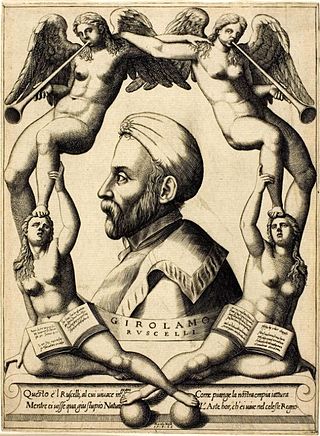
Girolamo Ruscelli (1518–1566) was an Italian Mathematician and Cartographer active in Venice during the early 16th century. He was also an alchemist, writing pseudonymously as Alessio Piemontese.

Giambattista Pittoni or Giovanni Battista Pittoni was a Venetian painter of the late Baroque or Rococo period. He was among the founders of the Academy of Fine Arts of Venice, of which in 1758 he became the second president, succeeding Tiepolo.

Domenico Passignano, born DomenicoCresti or Crespi, was an Italian painter of a late-Renaissance or Counter-Maniera (Counter-Mannerism) style that emerged in Florence towards the end of the 16th century.
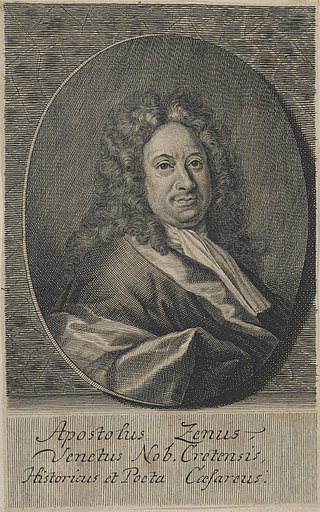
Apostolo Zeno was a Venetian poet, librettist, journalist, and man of letters.

Giovanni Tiepolo was Patriarch of Venice from 1619 to his death.
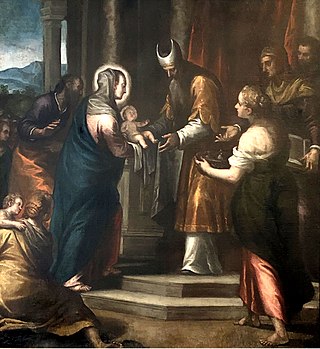
Alessandro Maganza (1556–1630) was an Italian painter of the Mannerist style, born and active in Vicenza, as well as in Venice.
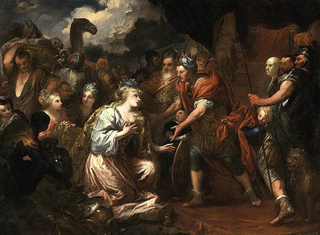
Pietro Dandini was an Italian painter of the Baroque period, active mainly in Florence.

Antonio Randa was an Italian painter of the classicist period, active in Ferrara, Modena, Rovigo, Florence, Comacchio and his native Bologna.

The church of Santa Maria Assunta, known as I Gesuiti, is a religious building in Venice, Italy. It is located in the sestiere of Cannaregio, in Campo dei Gesuiti, not far from the Fondamenta Nuove.
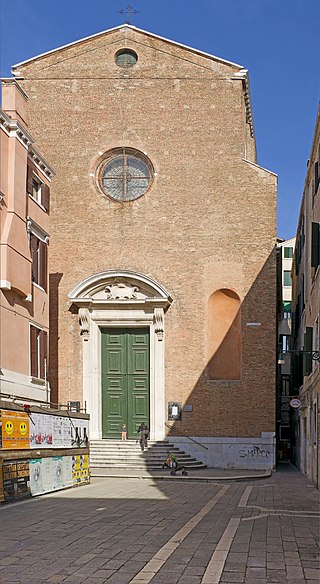
Santa Maria della Fava, also originally known as Santa Maria della Consolazione, is an ancient Roman Catholic church in the sestiere of Castello in Venice, Italy.

Giovanni Antonio Moschini or Giannantonio Moschini was an Italian author and Roman Catholic Somascan priest. He was an art critic who wrote mainly about art and architecture in Venice and the Veneto.

Noè Bordignon was an Italian painter, active mainly in Venice.
Antonio Ermolao Paoletti was an Italian painter, mainly of Venetian genre scenes, recalling Bamboccianti life of children and women, as well as sacred fresco work for churches in the Veneto.

Cosroe Dusi was an Italian painter in the Neoclassical style, active for many years in St Petersburg, Russia, painting mainly sacred and historical subjects. Dusi was nicknamed by his contemporaries the "modern Tintoretto", for his liveliness of invention and rapidity at painting.

Liberale Cozza was an Italian painter, active mainly in his native Venice, but also in Brescia in a Neoclassical style.

Ognissanti is a 16th-century Roman Catholic church located in the Dorsoduro sestiere of the Italian city of Venice.
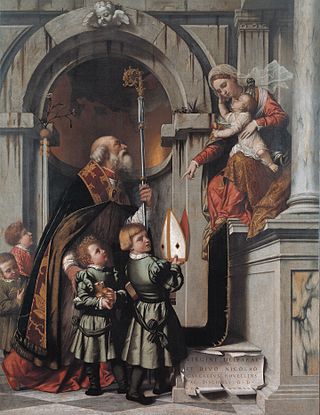
The Rovelli Altarpiece is a 1539 oil on canvas painting by Moretto da Brescia, which since 1899 has been in the Pinacoteca Tosio Martinengo in Brescia, Italy. Strongly influenced by Titian, it is named after the schoolmaster Galeazzo Rovelli who commissioned it for the church of Santa Maria dei Miracoli in Brescia in 1539, where it remained until being removed in the 19th century and replaced by a copy. Its composition was reused by Moroni in his Mystic Marriage of Saint Catherine in the 1560s.
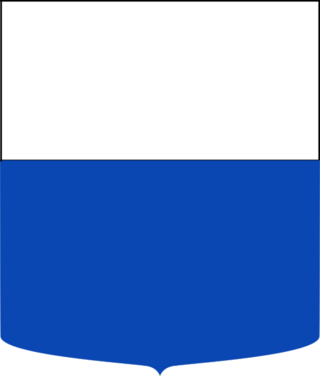
CavaliereGirolamo Zulian was a Venetian nobleman, ambassador, patron of the arts, art collector and Senatore Amplissimo. A member of the House of Zulian, he is best known for his leading art collection and for being one of the earliest patrons of Canova, a great friend of his, from whom he commissioned the Theseus and the Minotaur in 1781, while serving as ambassador to Rome. Zulian is credited as having played a fundamental role in Canova's rise to fame.
References
- ↑ Garollo, Gottardo (1907). Ulrico Hoepli (ed.). Dizionario biografico universale. Editore Libraio della Real Casa, Milan. p. 144.
- ↑ Guida per la città di Venezia all'amico delle belle arti, Volume 1, page 575.
- ↑ Il fiore di Venezia ossia i quadri, i monumenti, le vedute, Volume 3, by Ermolao Paoletti, page 172.
- ↑ Atti E Memorie delle RR. Deputazioni di Storia Patria per le Provincie Modenensi e Parmensi, page 3.
- ↑ Della letteratura veneziana: del secolo XIX, by Count Filippo Maria Nani-Mocenigo, page 199-200.